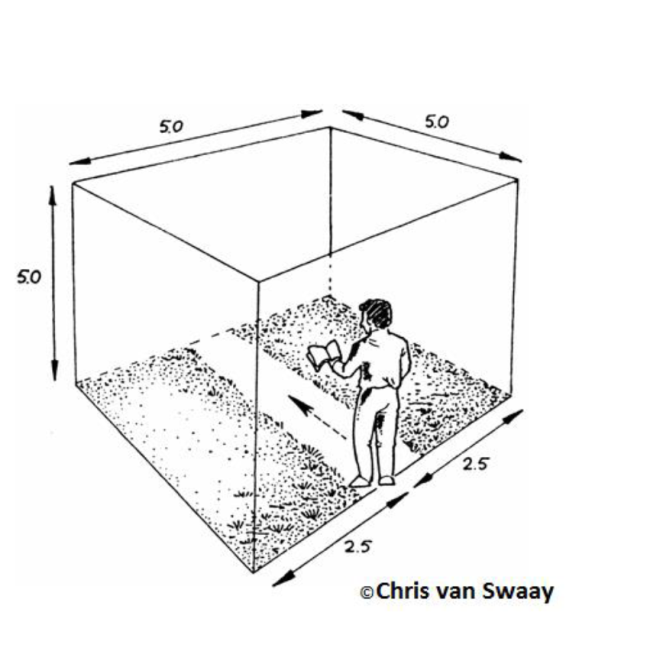Transect recording is a sampling method where butterfly numbers are recorded on a fixed route of 1-4km by one person, once a week, for the 26 weeks from the first week in April until the last week in September. Other people can join the walk but only one person should record the butterflies, as this avoids the numbers being artificially inflated.

The transect recording route is 5m wide and is typically divided into 5-10 sections, reflecting different habitats or areas of management. As the recorder walks the transect, every butterfly within an imaginary 5m cube is counted.
Transects reveal not only which species are present but also trends of abundance and phenology (the study of recurrent natural events in relation to seasonal climatic changes). Ideally, a sunny day should be chosen when the temperature is a minimum of 13 degrees C, but if it is an overcast day then it needs to be warmer, and probably not less than 17 degrees C. There is no point in walking a transect if it too cold, too windy or raining. It can sometimes be a challenge to find suitable weather, especially in the early part of the butterfly season. If we are unlucky and the spring is cold and wet, then the minimum weather requirements can be difficult to meet. The key to being a contented transect recorder is an acceptance of the vagaries of the British weather and then attempting to do the best you can. Ideally, every recorder should try and complete at least 20 out of the 26 weeks that recording takes place.
It usually makes sense for a transect recorder to live reasonably close to their transect, as that allows the recorder to grab a window-of-opportunity when the weather takes a turn for the better. A transect can be taken on by one individual or several, with members of the group communicating via WhatsApp or email, to establish a weekly schedule for the season.
Very little equipment is required. Most recorders use a notebook or the ‘Notes’ app on a mobile phone to record sightings, then complete a UKBMS F2 recording form before entering the data onto the UKBMS application. The temperature and wind direction need to be recorded, and that information is readily available on BBC weather (or other weather apps). A butterfly ID guide and a pair of close-focus binoculars are helpful but not essential, rather depending on the experience of the recorder.
If you are a recorder who would like additional help recording your transect or a volunteer who would like to help record a transect, then please contact transects@sussex-butterflies.org.uk
id=1